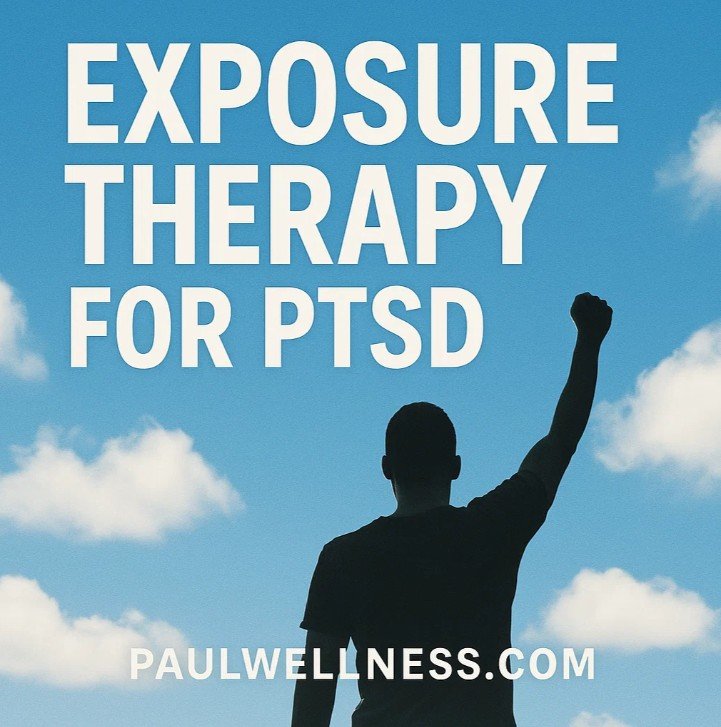If you’ve ever felt trapped in vivid memories, flashbacks, or emotional distress linked to past trauma, you’re probably well aware of how PTSD can hijack your life. But here’s some genuinely good news—exposure therapy for PTSD could help you break free.
Exposure therapy isn’t just another psychology buzzword. It’s a proven, powerful approach specifically crafted to help people facing PTSD. Let’s walk through how it works, why it’s effective, and how you can make it work for you.
What Exactly Is Exposure Therapy for PTSD?
Exposure therapy for PTSD involves safely confronting trauma-related memories, feelings, and situations you’ve been avoiding. By gradually facing these triggers, your mind and body begin to learn that you’re safe, helping to ease your distress over time.
Types of Exposure Therapy Used for PTSD
When tackling PTSD, therapists usually rely on these two primary methods:
1. Prolonged Exposure (PE)
Prolonged exposure involves repeatedly revisiting the traumatic event in your imagination (called imaginal exposure) and engaging with real-life reminders of trauma you’ve been avoiding (called in vivo exposure).
Example:
A veteran who avoids crowded spaces may gradually practice being in busy but manageable environments until their anxiety decreases significantly.
2. Written or Imaginal Narrative Exposure
This approach involves writing or vividly retelling your traumatic story. By repeatedly facing the trauma in a controlled and safe way, your emotional response gradually lessens.
Why Does Exposure Therapy for PTSD Work?
The magic behind exposure therapy is rooted in a psychological concept called habituation—your body’s natural ability to become accustomed to stressors when exposed to them repeatedly.
- Initially, confronting trauma triggers is distressing, but as you continue the process, your emotional response begins to decrease.
- Your brain starts realizing that the past threat isn’t ongoing, promoting healing.
Signs You’re Ready for Exposure Therapy
Not sure if you’re ready to tackle exposure therapy yet? Here’s how to tell:
- You’re tired of PTSD controlling your life, and you’re motivated for change.
- You have support systems (family, friends, therapist) in place.
- You’ve tried other coping strategies like stress relief, mindfulness, or traditional talk therapy, but your symptoms persist.
If you relate, exposure therapy might be your next step.
A Real-Life Example: Let’s Talk About Sarah
I once met someone named Sarah (not their real name of course) who had been in a serious car accident. Even months later, Sarah couldn’t drive or even ride comfortably in a car. She’d get vivid flashbacks, intense anxiety, and panic attacks just thinking about vehicles.
When Sarah started exposure therapy, she began by simply talking about the accident and gradually moved towards looking at photos of cars, sitting in a parked car, then eventually taking short rides around her neighborhood. Each step was uncomfortable at first—but slowly, the intensity of her emotional reactions lessened.
Today, Sarah drives comfortably again, proving exposure therapy’s effectiveness firsthand.
Tips to Make Exposure Therapy Work for You
Exposure therapy can feel daunting, especially at the start. Here are some practical ways to set yourself up for success:
- Partner with a Trusted Therapist:
PTSD exposure therapy should always be done under professional guidance. - Start Small and Gradually Progress:
Tackle manageable scenarios first, then gradually move towards more challenging ones. - Be Consistent and Patient:
Healing takes time, so regular, repeated exposure is key. - Combine Exposure with Coping Skills:
Incorporate stress management techniques, mindfulness, grounding exercises, or anxiety-reducing tools such as a fidget toy (Ono Roller Fidget Toy Review).
Common Questions about Exposure Therapy for PTSD
Here are some frequent questions I hear in practice:
Is exposure therapy safe for PTSD?
Absolutely. Though challenging, exposure therapy is performed carefully, step-by-step, ensuring your emotional safety throughout.
Can exposure therapy completely cure PTSD?
For many, it significantly reduces or even eliminates PTSD symptoms. The effectiveness varies, but improvement is common.
What if exposure therapy makes me feel worse at first?
Temporary distress is normal. Therapists help manage your anxiety through coping strategies, ensuring you feel safe during treatment.
Other Interesting Articles
- Ono Roller Fidget Toy Review: The Ultimate Hand Roller for Stress Relief?
- How to Cope with Political Stress Without Losing Your Mind
- Political Stress: How to Stay Sane When the World Feels Like It’s on Fire
- Political Stress Quiz: How Stressed Are You?
- Top 3 Emotional Regulation Books for Kids: Helping Children Navigate Big Feelings
- PaulWellness Free Therapy Worksheets
Wrapping Up: Hope for Healing from PTSD
Exposure therapy for PTSD isn’t always easy, but it can genuinely give you your life back. By gently confronting and gradually overcoming your trauma-related fears, you’ll find yourself reclaiming peace and freedom.
Remember, PTSD doesn’t have to define your future. Healing is challenging—but entirely possible.
Ready to reclaim control over your memories and emotions?
You’ve absolutely got this.
Author:
Paul Wellness is an expert in exposure therapy and trauma recovery, offering compassionate, evidence-based guidance for overcoming PTSD and anxiety.


